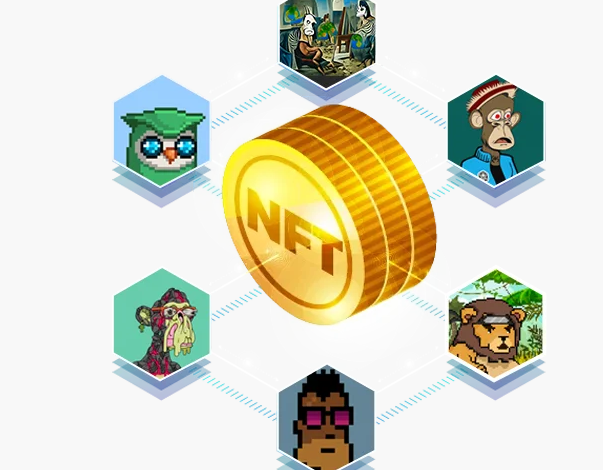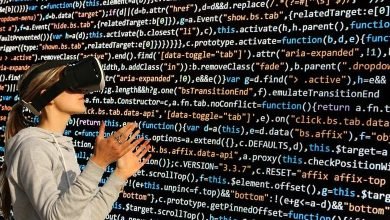The Ultimate Guide To Creating An Nft Marketplace

One of the most recent innovations in the digital economy is non-fungible tokens. Digital files that were sold for millions of dollars have been mentioned in recent news articles. Uncertainty surrounds the NFT development’s full potential. Despite an increase in high-end digital art transactions, the majority of purchases are of less expensive files like domain domains, collectible tokens, and one-of-a-kind goods for video games. Create your own NFT marketplace if you’re interested in NFT Marketplace Development Services.
Describing NFTs
A non-fungible token can be created from any digital file. The same blockchain technology that underpins cryptocurrencies like Bitcoin and Ethereum also tracks NFTs, which are files. Buyers and sellers may clearly track who owns the file using this way.
The digital uniqueness of every NFT is significant. An image can be copied, but the original file’s ownership is still protected. NFTs are comparable to seeing an original piece of art at a museum in this regard. The original will remain in place, even if you find it so enjoyable that you decide to buy a print from the museum shop for your house.
Artists Can Benefit from NFTs
NFTs have given digital artists access to a new realm. It can be difficult to sell digital art because of how simple it is for a user to reproduce an image online. However, the NFT procedure offers artists a means of getting credit for and making money from their works.
The Benefits of NFTs for Collectors and Buyers
The exclusive ownership permitted by the format appeals to buyers of NFTs. The thrill of owning an original work of art is available to collectors. They might make money by offering licences for public use.
- Valuable
- Exclusive
- Secure
NFTs are viewed as an investment opportunity by other buyers. They will keep the file until they can sell it for a profit because of how the market changes.
An Overview of NFT Market Development
NFT developers have been active in developing markets for these files as their popularity develops. Some current marketplaces serve as all-purpose trading venues for NFTs of any category. Other online markets deal with files for specialised online games, niche topics, or the high-end art market.
A number of well-liked NFTs
- Digital Artwork
- Music
- Clips
- GIFs
- Photos
- Tweets
- Games
- Domains
- Tokens
- Licenses
NFT Marketplace Operation: 4 Important Elements
The files are not the main focus of the current NFT development efforts. NFTs need a place to be bought and sold, just like any other commodity. The front-end environment for presenting and brokering the files is user-friendly in NFT marketplaces. Additionally, they need a solid back-end that supports the underlying blockchain technology.
-
Bitcoin wallets
To use NFTs, buyers and sellers need crypto wallets. Unlike files on a hard drive, NFTs or digital currency are not stored in these digital programmes. Instead, they include data that identifies where the owner’s files are stored on the blockchain. Marketplaces should collaborate with many crypto wallet providers like WalletConnect and MyEtherWallet in order to reach a larger clientele.
-
Selling and bidding
In the actual world, marketplaces serve the same purpose as art galleries. Items for sale at a set price might be listed by sellers. Timed auctions for brand-new artwork or pieces by well-known artists are another option for marketplaces.
-
Insightful Contracts
Smart contracts are used in NFT markets to specify the terms of a sale between a buyer and a seller. A self-executing digital contract that is part of the blockchain network contains these conditions in its code. The contract becomes effective and the sale is final as soon as the buyer complies with the requirements set forth by the seller.
-
Operational Costs
Users frequently overlook the costs associated with online transactions. Blockchain transactions require a lot of energy, though. The energy expenses of facilitating the transaction on the network and converting money into cryptocurrency may also be included in the price of NFTs.
8 characteristics of an NFT market
There are front-end and back-end issues to consider when creating your own NFT marketplace. Marketplace NFT developers must design a user interface that makes it easy to search for needed files and a back-end system that manages intricate transactions with ease.
-
Storefront
An e-commerce website and an NFT marketplace are similar. It needs a user-friendly, appealing front-end storefront. The amount of data displayed for each file must be chosen by the administrator. NFT customers will want to know the history and authenticity of their files, just like collectors of tangible art do.
They also request a list of their NFTs’ rarities. A single NFT cannot be copied, however artists are free to publish many NFTs of the same image. These will have labels like “Number 2 of 10” on marketplaces. Similar to real trading cards, collectors seek out one-of-a-kind NFTs.
-
Items for Search
You must choose the range of the files you will exchange while creating your own NFT marketplace. Some of the first online markets, like OpenSea, are open markets that accept any NFT. Newer markets frequently concentrate on a certain specialisation. Whatever you sell on your website, you’ll need a search feature to speed up the purchasing process.
-
Filters
Another approach to enhance a buyer’s experience is via search filters. Collectors and others who see NFTs as investments have different standards. Items should be able to be sorted by user preferences, including price, rarity, and artist.
-
Listings
Both buyers and sellers must have a satisfying experience on the NFT marketplace. An easy-to-follow path is provided by well-designed NFT development when someone wishes to list a file. Both forms that request selling information and clear uploading instructions should be available on the marketplace.
-
Listing status
In an NFT transaction, both parties require knowledge of the procedure. The marketplace can provide information to sellers on how many individuals have seen a file and made an auction bid. When someone makes an offer, the website can notify them. Before making a purchase, customers want to be sure that a file has undergone authentication. Collectors are more drawn to verified artefacts.
-
Purchases and Auctions
Your website can include a number of selling mechanisms thanks to NFT engineers. Timed auctions are frequently the greatest way for well-known artists to sell their works because the price can rise quickly due to competition. However, compared to straightforward transactions, the back-end labour for an auction is more difficult. The site must offer real-time updates on the transaction because bidding might become heated, particularly toward the end of the auction.
The method of buying and selling directly is simpler. While typical e-commerce sites’ payment gateways may not require as much programming, utilising smart contracts on the blockchain does.
-
Wallet
Consumers who are tech savvy are just as concerning about the security of their cryptocurrency wallets as they are about the security of any other financial data. Users should be able to use their current crypto wallet solutions on a new NFT marketplace.
-
Scores
Ratings are a useful resource for consumers and sellers alike. Strong reputations increase the likelihood of business transactions. Additionally, a rating system can stop bad actions like lying or cancelling a transaction before the smart contract takes effect.
Professional development of the NFT market
You can create a successful custom NFT marketplace or an NFT marketplace using game engines like Unity or Unreal Engine with the assistance of the NFT marketplace development experts.
They can create a user-friendly front-end that benefits both buyers and artists if they have a clear understanding of the project’s parameters.
In order to interact with NFTs and blockchain technology, the development team will build efficient back-end resources including databases, APIs, and other components.








